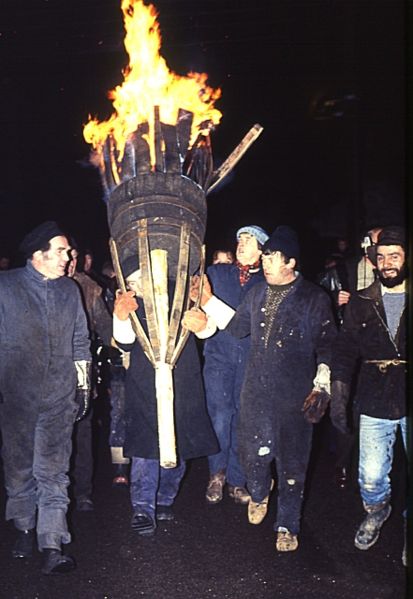 |
Burning the clavie is
an ancient Scottish custom still observed at Burghead,
Scotland, a fishing village on the Moray Firth, near Forres.
The clavie is a bonfire of casks split in two,
lighted on 11 January, i.e. the first day of the year by the
Julian Calendar (the original
Hogmanay before the calendar changed in 1660).
One of these casks is joined together again by a huge nail
(Latin clavis; hence the term, it may also be from
Scottish Gaelic cliabh, a basket used for holding
combustibles). It is then filled with tar, lighted and
carried flaming round the village and finally up to a
headland upon which stands the ruins of a Roman altar,
locally called the Douro. It here forms the nucleus
of the bonfire, which is built up of split casks. When the
burning tar-barrel falls in pieces, the people scramble to
get a lighted piece with which to kindle the New Year's fire
on their cottage hearth. The charcoal of the clavie
is collected and put in pieces up the cottage chimneys, to
keep spirits and witches from coming down.
|

